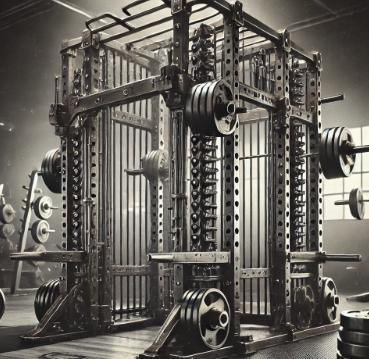Building Leg Muscles From Squatting
Published By GainzTracker, 25th September 2024

The Ultimate Guide to Squats for Muscle Building
Introduction
Squats are one of the most effective exercises for building muscle and strength in the lower body. This compound movement engages multiple muscle groups, including the quadriceps, hamstrings, glutes, and lower back. In this article, we will explore the benefits of squats, different variations, and tips for mastering this essential exercise.
Benefits of Squats
- Full Body Activation: Squats engage not just your legs but also your core and upper body, making them a full-body workout.
- Muscle Hypertrophy: Squats stimulate muscle growth in the legs and glutes, leading to a stronger and more muscular physique.
- Improved Mobility: Regularly performing squats enhances flexibility and joint mobility in the hips, knees, and ankles.
- Functional Strength: Squats mimic everyday movements, helping to improve functional strength for daily activities.
- Boosted Athletic Performance: Strong legs contribute to better performance in sports and activities requiring speed and power.
Squat Variations for Muscle Building
There are several squat variations to include in your training routine to target different muscle groups and add variety:
- Bodyweight Squats: A great starting point for beginners to master form before adding weight.
- back Squats: Performed with a barbell on your back, back squats are excellent for building overall leg strength.
- Front Squats: With the barbell held at the front of your shoulders, front squats place more emphasis on the quadriceps.
- Goblet Squats: Holding a dumbbell or kettlebell at chest level, goblet squats improve form and strengthen the core.
- Split Squats: A unilateral movement that targets each leg individually, split squats help to improve balance and symmetry.
Tips for Mastering Your Squats
- Focus on Form: Proper technique is crucial. Keep your chest up, back straight, and knees tracking over your toes.
- Engage Your Core: A strong core stabilizes your body during the squat, allowing for better control and balance.
- Use a Full Range of Motion: Aim to lower yourself until your thighs are parallel to the ground for maximum muscle engagement.
- Start with Light Weights: If you’re new to squats, begin with bodyweight or light weights to perfect your form.
- Progress Gradually: Increase the weight or difficulty level slowly over time to avoid injury and promote muscle growth.
Conclusion
Squats are a foundational exercise for anyone looking to build muscle and strength in their lower body. By incorporating various squat variations into your training routine and focusing on proper form, you can maximize your results and achieve your fitness goals. Remember to stay consistent, listen to your body, and enjoy the journey of building muscle!
Call to Action
Ready to transform your workouts? Start incorporating squats into your routine today and watch your strength and muscle gains skyrocket!
Disclaimer: The information provided in this article is for educational purposes only and is not intended as a substitute for professional medical advice, diagnosis, or treatment. Always consult with a healthcare provider before beginning any exercise program. Use caution when performing exercises to avoid injury.